
How to Prune Shrubs: Pruning 101
Published: 20/01/2023 | Updated: 18/04/2023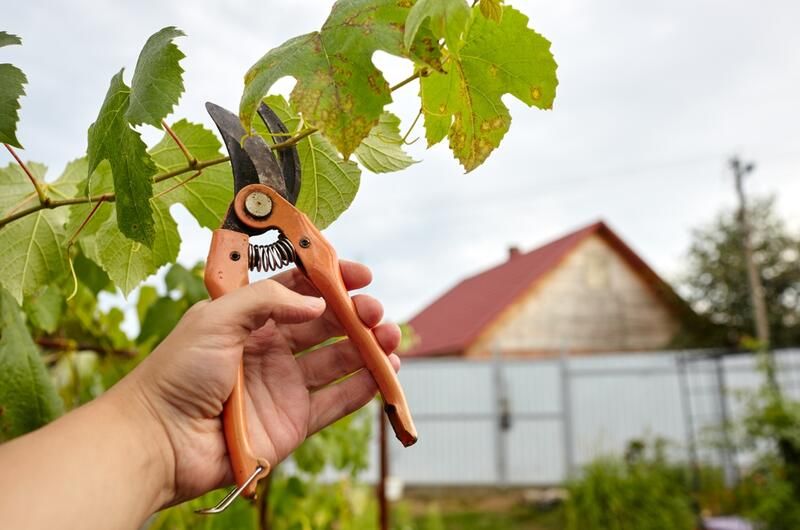
Do you know the proper way to prune? Pruning has a direct positive impact on the health and aesthetic appeal of trees and shrubs. Find out why, how, and when to do something. Let's jump right in! Here's everything you need to know about pruning different types of shrubs!


What is Pruning?
Pruning is the methodical removal of plant components (such as branches, stems, and flowers). But it's not just done for looks and fashion. Pruning removes dead or diseased stems and branches, promotes the growth of flowers, fruit, and new foliage, and aids in controlling the growth and structure of evergreen shrubs and trees. Pruning is an excellent strategy to maintain plants, especially woody ones like trees and shrubs, growing healthily.
Pruning is an art that you can master with practice. Don't be afraid to experiment and learn as you go. If you want information on pruning particular plants, don't be afraid to check with your county extension office or reference a good book on the subject. You can trim your plant correctly if you understand it, its function, and especially when it blooms.
What Should You Prune?
The general rule of thumb for pruning is less is more. To put it another way, don't prune hastily; consider what you're pruning before cutting. Making another cut is not difficult, but reattaching a branch is more complicated.
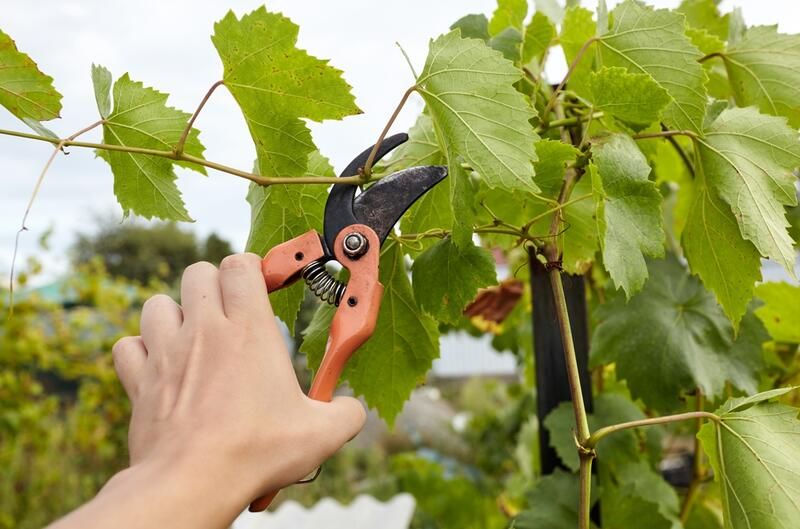
Among the typical items you should prune from trees and deciduous shrubs are the following:
Branches that are dead, dying, broken, or afflicted:
-
Pruning is necessary for any branches or stems that are diseased, dead, or damaged. Any time of the year is suitable for this, but the sooner the better. To avoid wasting energy on damaged areas, at the absolute least, clip branches or stems before the plant starts new growth in the spring. In addition to aiding in the prevention of illness from spreading to other sections of the plant, removing dead or dying branches will enable the tree or shrub to concentrate on growing new, healthy growth.
Branches that Intersect or Develop Downward or Inward:
-
Crossing branches should be removed, or at the very least, one of the troublesome limbs should be pruned. Branches that touch each other may chafe, opening an entryway for pests and disease.
Similarly to this, it is advisable to cut branches that grow inward toward the core stem or trunk because they are likely to wind up rubbing against other sections of the plant. A tree or shrub is more susceptible to rot and other fungal diseases that flourish in damp, stagnant air if it has to grow in on itself. It is also crucial to provide some room for air to reach the heart of the plant.
If downward-growing branches finally come into contact with the ground or other plants, they may become vulnerable to disease and pests. Removing these branches helps to promote better development higher up in the plant because they are typically less productive and healthy. Another reason to control low-growing branches is safety; they may pose a threat to people or property.

Shrubs & Trees that are Young:
-
Pruning young woody plants should promote the development of a balanced, open structure of stems or branches. Keep an eye out for stems or branches that are growing inward or crossing; it's better to "nip them in the bud" while they're still accessible and easy to clip!
Branches that are rubbing against one another, crossing over, or growing at an angle of thirty degrees or less to the trunk should be cut off since they are loosely connected and more likely to fall off during storms.
Once the branches have a diameter of about an inch, cut off any that are approaching the ground too closely. These branches will develop better roots and a stronger trunk if they are left in situ when they are less than an inch in diameter. Don't leave stubs; instead, prune branches back to their site of origin at the trunk or a lower branch.
To promote additional branching, little twigs can be pruned back to a bud.
Water Sprouts and Suckers:
-
Suckers, or protruding long shoots from a tree's base or roots, should be cut back as close to the source as feasible. Suckers are an energy drain on trees, as their name implies.
As soon as you notice water sprouts (shoots rising straight up from the main branches of shrubs and trees), you should prune them. The shape and growth pattern of a tree or shrub can be guided by removing sprouts. Additionally, it avoids branch overlapping and chafing.
-
The age and size of the plant affect what and how much pruning is necessary.
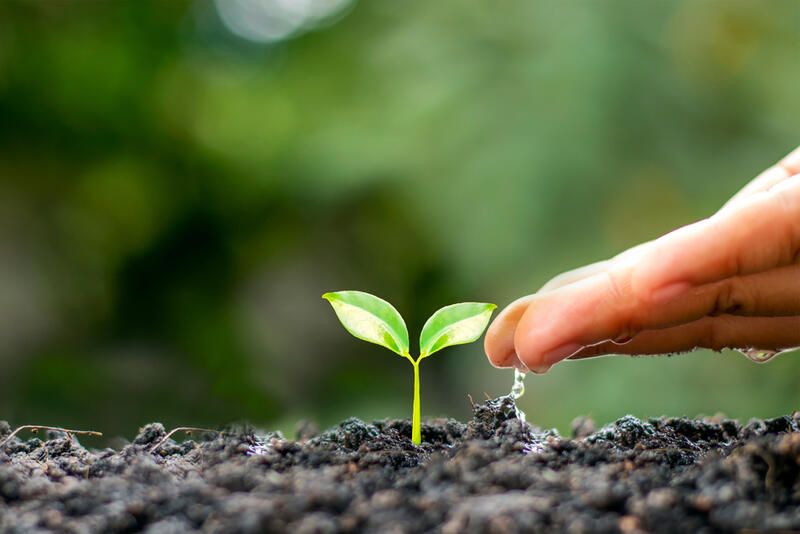
Old Shrubs and Trees:
-
Pruning older trees and shrubs can be quite beneficial since it stimulates the growth of fresh, healthy vegetation, which produces flowers and fruit that are equally healthy.
Viburnum, lilac, and forsythia are examples of multi-stemmed shrubs that may tolerate more severe trimming. To promote new growth, cut out up to a third of the old stems.
Pruning Shrubs
When pruning shrubs, remove individual branches to keep the plant's natural shape. Remove all dead, broken, crowded, and crossed units back to the plant's root system using loppers or hand pruners. Hedge shears should not be used to prune flowering bushes.
-
Trim the plant back to a bud that is facing away from the main stem or trunk. This bud will produce new growth; therefore, you want it to expand rather than contract.
-
Leave a space of about 1/2 inch between the bud and the cut.
-
To prevent water from gathering on the wound and going towards the bud, cut at an angle that slants down and away from the bud.
-
Cut back to a lateral branch, or the point at which a tiny branch emerges from the larger branch while trimming bigger branches.
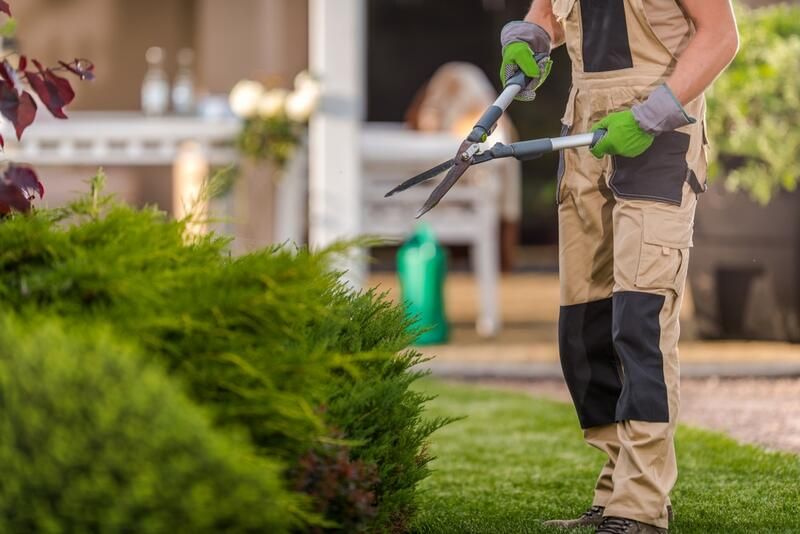
The 1/3 Rule
Let's get into the one-third rule. Moderate trimming encourages fresh, healthy growth in existing shrubs and small trees. Plants exist in a state of equilibrium between their above- and below-ground components. When a significant number of stems are lost, especially at the top of the plant, the plant tries to regain equilibrium by putting forth new growth to keep the top foliage in harmony with the water and nutrients that the root system is pouring into it.
Regrowth is beneficial in moderation because it helps plants recuperate and enables pruning to prompt growth from dormant buds. However, a plant enters a state of shock or panic when it loses an excessive amount of its leafy growth. It may attempt to regrow at this time from suckers or water sprouts, a habit that can make the plant appear scraggly. Suckering typically lasts for a considerable amount of time after it starts.
On the other side, insufficient pruning has little to no effect on promoting new growth. Mild pruning won't encourage new stem growth the way a decent 1/3 pruning does, even though it might assist give the plant some little contouring.
When 1/3 Isn't Enough
When a shrub is neglected for a prolonged period, it may become so overgrown and unmanageable that regular pruning is insufficient (this is very common with overgrown shrubs). Some experts advise rejuvenation pruning, a fairly drastic form of pruning, for these plants. This entails completely removing the shrub at a height of just six to twelve inches above the ground. For a brief while, the shrub will be little more than an unsightly clump of stems, but it quickly takes on a new, better shape. Although not all shrubs fare well with renewal pruning, the ones that do are precisely the ones that have the propensity to spiral out of control:
-
Weigela
-
Lilac
-
Honeysuckle
-
Spirea
-
Forsythia
-
Hydrangea
-
Potentilla
-
Crape Myrtle
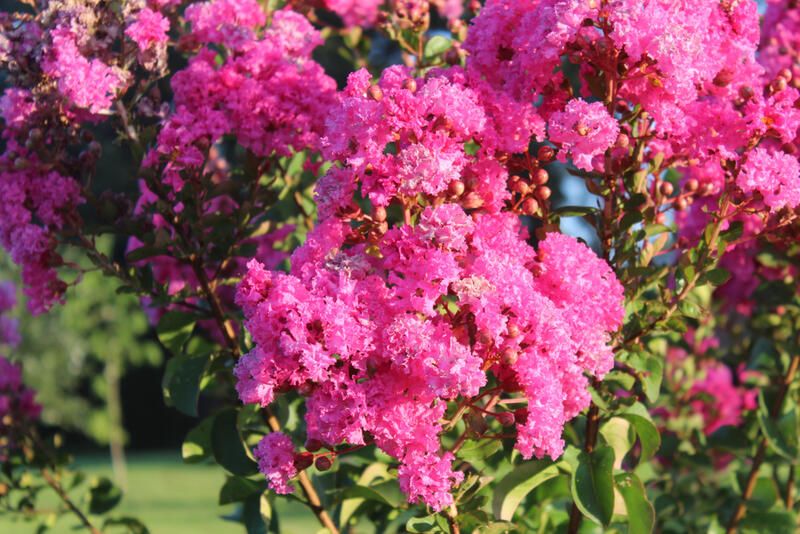
When to Prune
As soon as you find any dead, dying, or broken branches, you can remove them, however, when it comes to shaping or sizing your trees, we advise according to the following rules:
Early Spring
Pruning summer-blooming bushes and trees that flower on the growth of the current season. Among them are Japanese spirea, bush honeysuckle, rose-of-Sharon, Summersweet, and panicle hydrangea. Pruning in the early spring avoids you from eliminating any stems that may have developed blossoms and encourages these shrubs to concentrate their growth on the freshly cut sections.
Evergreen bushes and hedges should be pruned in the spring before new growth appears. Hedge shears can be used to shape and encourage new growth on plants like yew and privet that are used in formal hedges and foundation plantings. Other examples are boxwood, juniper, and arborvitae. Evergreen bushes like junipers should be pruned from the bottom up. By pruning them back to a lower branch that is below an overhanging branch, you can shorten branches that are growing longer than you want them to. With the cuts covered by the branches above, this results in a cleaner appearance.
The earlier you plant fruit-bearing trees and shrubs, the better. Pruning can be done whenever it's warm enough outside and before the start of the spring growth cycle. Fruit trees should be pruned to create greater inner space so that more light may reach the crown and improve fruit output. Different fruit trees require different pruning techniques. Even within a species, there are some variances for specific cultivars.
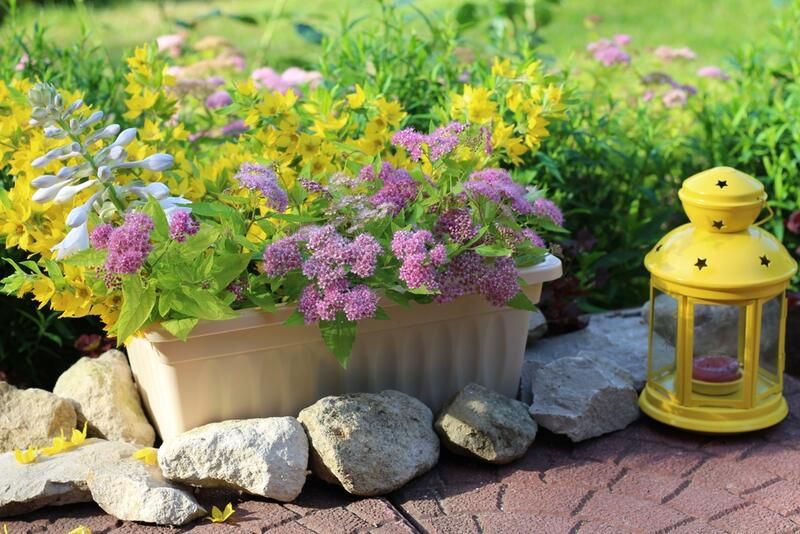
Spring
Cut off all dead wood from the roses that perished during the winter. Just above an outward-facing bud, cut canes back to healthy, living wood. The bush should then be pruned to take on the appropriate shape and height.
After Spring
Wait until after they have finished blossoming before pruning spring-flowering shrubs that bloom on the previous season's growth (old wood). Pruning stems that would have produced blooms the following spring will be lost if you wait too long after blossoming. Rhododendrons, dogwoods, lilacs, forsythia, and some hydrangeas are among the woody plants that bloom on old wood (Hydrangea macrophylla, H. Quercioli).
The Right Pruning Tools
There are many different pruning tool types available, each with a specific use, including hand pruners, loppers, shears, and trimmers. However, the selection can get quite bewildering. To choose the best tool for the job, follow these steps:
Loppers
Hand pruners could become ineffective when cutting branches that are larger than 1/4 inch in diameter. Upgrade to loppers rather than taking a chance on crushing or creating an uneven cut. In essence, loppers are larger, more powerful pruners with long handles that provide more leverage and force. They are ideal for making clean, accurate cuts through tougher branches, stems, or roots that are too thick for hand pruners.
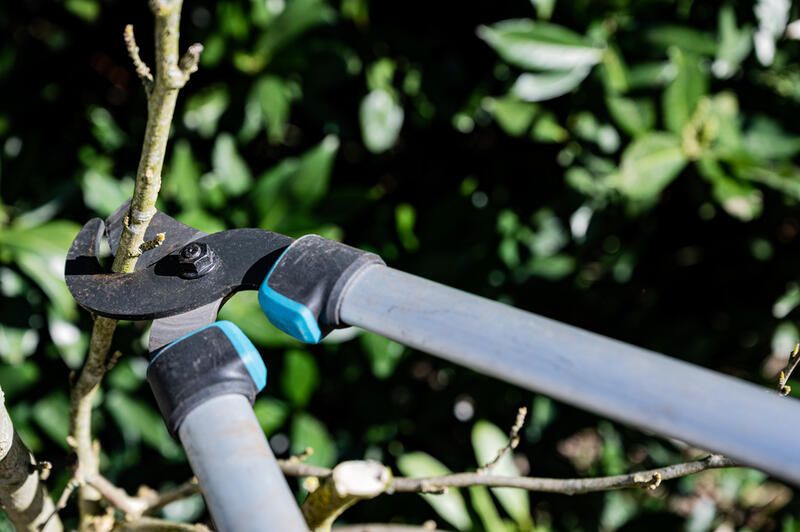
Pruning Saws
Contrary to common assumption, using a saw is not usually a drastic action. Pruning saws are specifically made to produce clean cuts through branches that hand pruners and loppers can't handle thanks to their curved blades and sharp teeth. They work well when you need to prune larger branches off a tree or remove substantial portions of a shrub. The pole saw, which is simply a saw on a stick, is another option for when you need to reach higher branches but don't want to take a chance by using a ladder.
Hand Pruners
Hand pruners are a gardener's best buddy, second only to the trowel. They are small and lightweight enough to be held in one hand or a pocket, yet sharp enough to cut through any (small) stem in their path with ease. Make precise cuts on fragile, brittle stems and branches with hand pruners.
Pruners come in two major varieties: anvil and bypass. Anvil pruners have a single blade that contacts a flat edge, while bypass pruners have overlapping blades like scissors. Anvil pruners have a tendency to partially crush the stem instead of cutting through it cleanly, which leaves the plant vulnerable to disease and pests. Bypass pruners are advised as a result.
Hedge Trimmer
Motorized hedge trimmers are used to shape large sections of evergreen hedges and bushes, similar to how shears are. They create precise cuts over a wider range of surfaces than typical shears by using sharp, reciprocating blades. We advise utilizing an extension hedge trimmer if the hedge you're trying to cut is too big to handle with conventional shears.
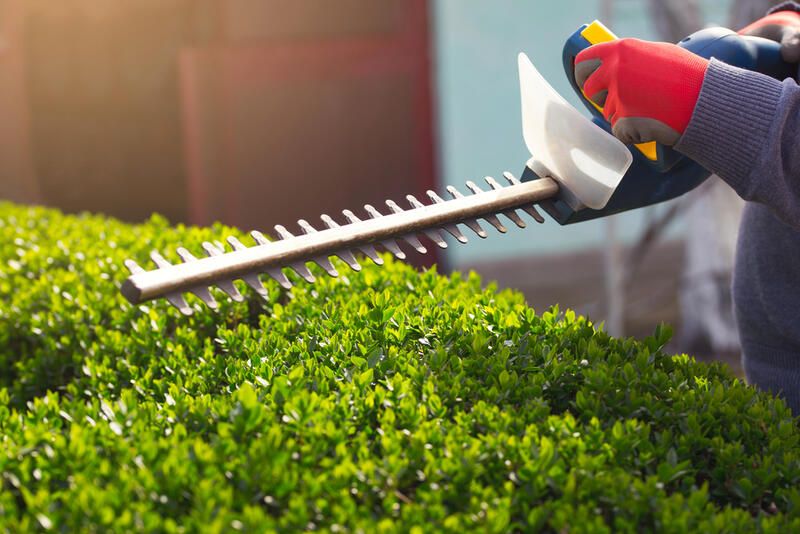
Hedge Shears/Pruning Shears
Evergreen hedges and topiary are best shaped using traditional hedge shears, which resemble enormous scissors. Most other shrubs and trees shouldn't be pruned with them because of how widely their huge blades cut.
Keep Pruning Tools Clean!
Once you have the proper equipment for the job, it's crucial to maintain it clean—not only to increase the tool's lifespan but also to shield trees and shrubs from illness. Rub alcohol should be used to disinfect your pruning tools both before and after usage to eradicate any disease-causing bacteria that may have come into touch with the tools during use.
Now You Have Everything You Need, Get to Pruning!


